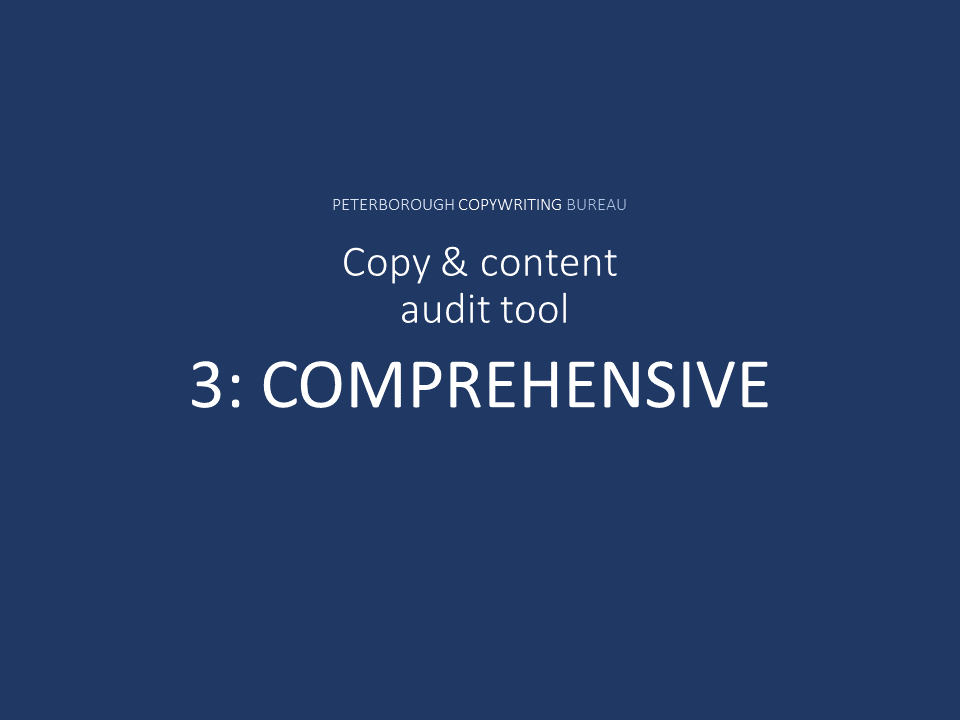Does your content give readers all the information they are looking for? The best content often answers their questions and leaves them feeling glad they spent time with it.
NOTE: This is part 3 in a ten-part serialisation of my eBook. Please read the introduction first if you are new to the tool.
Comprehensive content also tends to perform well from an SEO (search engine optimisation) point of view. Google likes giving its users answers to their questions, and comprehensive content is usually more likely to do that.
As a quick test, I Googled ‘best way to control weeds’ and the first five pages listed were all 800 words or more. It is of course possible to rank highly for pages with much less content, but longer pages often do better if the copy is relevant to the search.
You could break down the process of checking that content is comprehensive into two steps:
1: The quick check
For many pieces, especially those giving some news or information about specific events, products or services, a good step is a quick check of Kipling’s list from his poem on journalism: What, Why, When, How, Where and Who. Another one to add is ‘how much?’ if readers will be expecting an indication of price.

Here are some examples of how to apply the list:
-
WHAT is the product/service/event, and WHAT does it do?
-
WHY should readers be interested? (What’s in it for them?)
-
WHEN is the event? Or WHEN can customers expect delivery of the product?
-
HOW can people access the event/product/service?
-
WHERE is the event? Or WHERE can the customer buy the product/service?
-
WHO is delivering the event/product/service? What is it about your company that should matter to the reader?
-
HOW MUCH does it cost?
Are all the relevant answers to those questions present?
2: In more detail
Take a couple of minutes to write a list of what a reader would expect from the piece. As an example, if I am auditing a piece of content with the headline ‘how to tackle weeds in your garden’ I might come up with a ‘what readers want to know’ list with items like this:
-
What types of weeds are there?
-
How do I identify them?
-
Are there any good weeds?
-
Do birds like weeds?
-
Which are easy to dig up?
-
Which ones need to be controlled with chemicals?
-
What chemicals are available?
-
Are there any risks with using chemicals?
-
How often should I apply chemicals.
-
When should I apply chemicals?
-
What are some alternatives to chemicals?
-
Will weeds come back?
-
How can I stop weeds coming back?
-
Does weed membrane work?
This would be a useful list with which to assess whether the content is comprehensive enough. For product promotion pieces you can take a similar approach, but the questions will cover topics such as usage, features, benefits, price, availability and so on.
Some solutions to ‘comprehensive’ problems
Fixing problems in this category is fairly straightforward. Once you have identified the gaps in content, you go ahead and fill them. That could be by adding more content to the page, or adding links to more information if it’s available elsewhere on your site.
Another option would be to invite people to request more information, if you can provide but can’t make it instantly available. (For example, if you wish to use the offer of more information to capture leads.)

